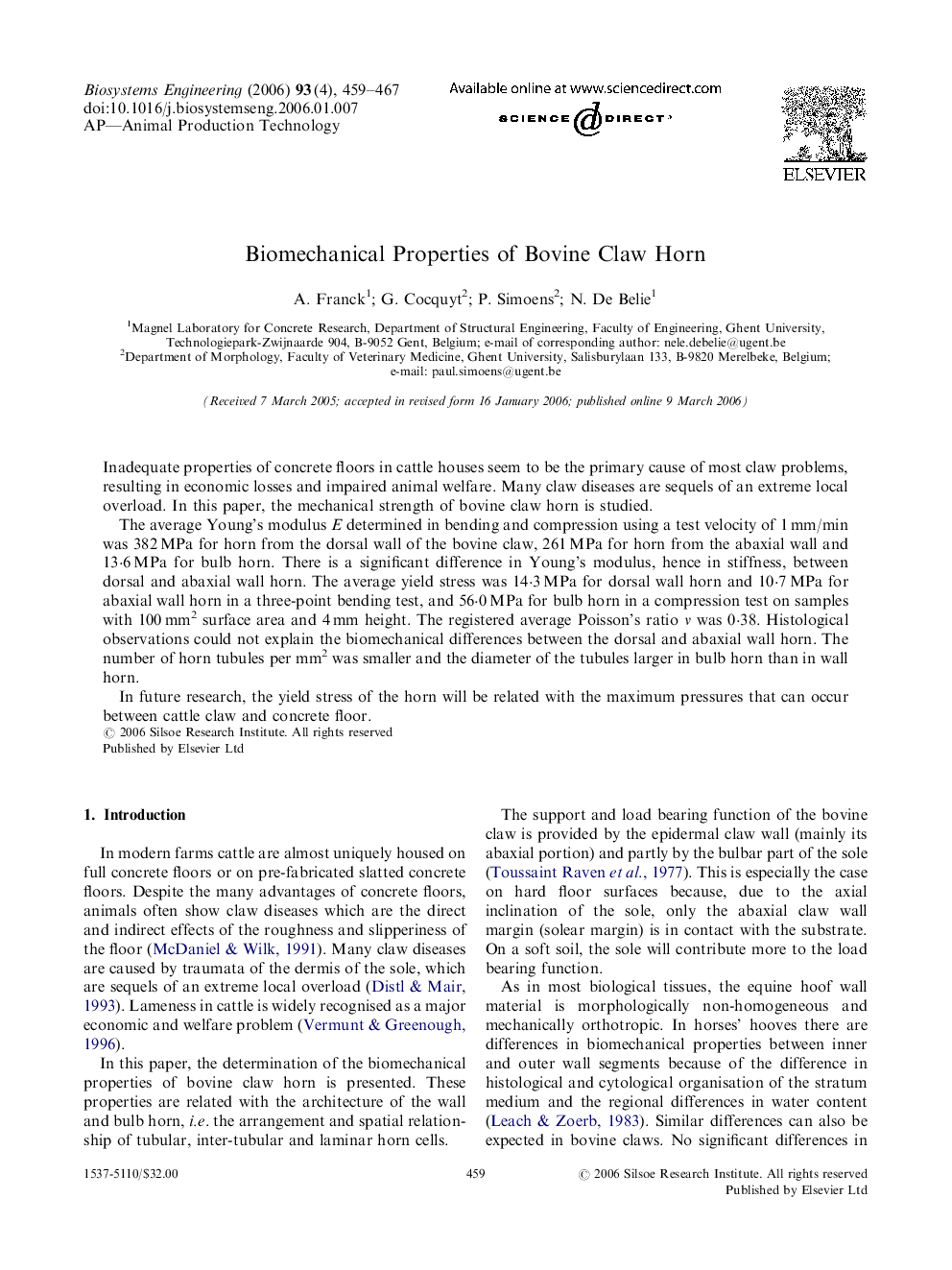| Article ID | Journal | Published Year | Pages | File Type |
|---|---|---|---|---|
| 1712841 | Biosystems Engineering | 2006 | 9 Pages |
Inadequate properties of concrete floors in cattle houses seem to be the primary cause of most claw problems, resulting in economic losses and impaired animal welfare. Many claw diseases are sequels of an extreme local overload. In this paper, the mechanical strength of bovine claw horn is studied.The average Young's modulus E determined in bending and compression using a test velocity of 1 mm/min was 382 MPa for horn from the dorsal wall of the bovine claw, 261 MPa for horn from the abaxial wall and 13·6 MPa for bulb horn. There is a significant difference in Young's modulus, hence in stiffness, between dorsal and abaxial wall horn. The average yield stress was 14·3 MPa for dorsal wall horn and 10·7 MPa for abaxial wall horn in a three-point bending test, and 56·0 MPa for bulb horn in a compression test on samples with 100 mm2 surface area and 4 mm height. The registered average Poisson's ratio ν was 0·38. Histological observations could not explain the biomechanical differences between the dorsal and abaxial wall horn. The number of horn tubules per mm2 was smaller and the diameter of the tubules larger in bulb horn than in wall horn.In future research, the yield stress of the horn will be related with the maximum pressures that can occur between cattle claw and concrete floor.
